Captain Martin Bottom Loyd founded First National Bank of Fort Worth in 1877 on Houston Street at West 2nd Street.
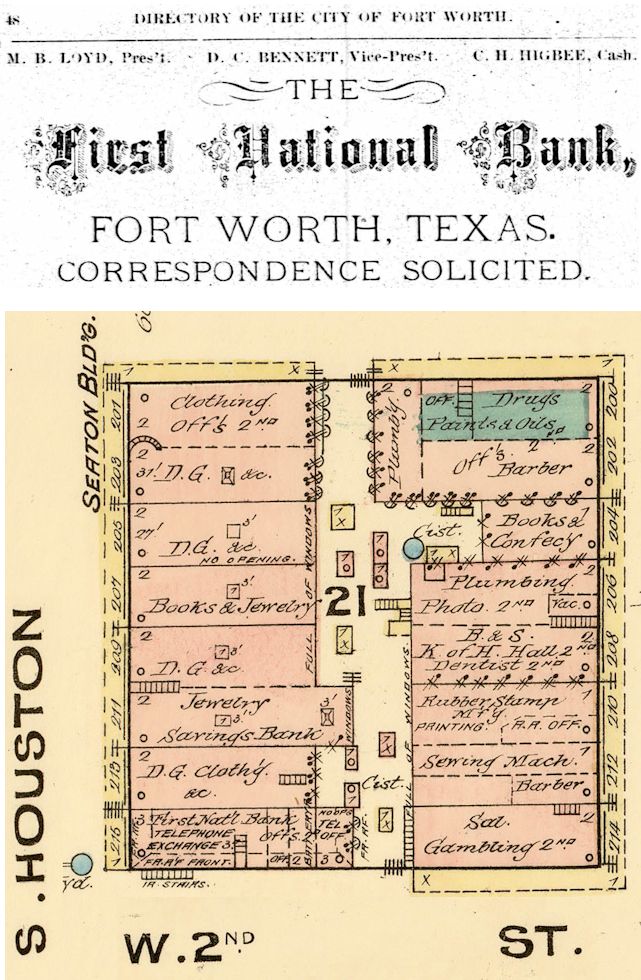 The bank was listed in the 1877 city directory. (Vice president David Chapman Bennett’s house survives on Samuels Avenue.) And an 1885 Sanborn map shows that the three-story bank building (a skyscraper for its day) also housed Fort Worth’s first telephone exchange on the third floor.
The bank was listed in the 1877 city directory. (Vice president David Chapman Bennett’s house survives on Samuels Avenue.) And an 1885 Sanborn map shows that the three-story bank building (a skyscraper for its day) also housed Fort Worth’s first telephone exchange on the third floor.
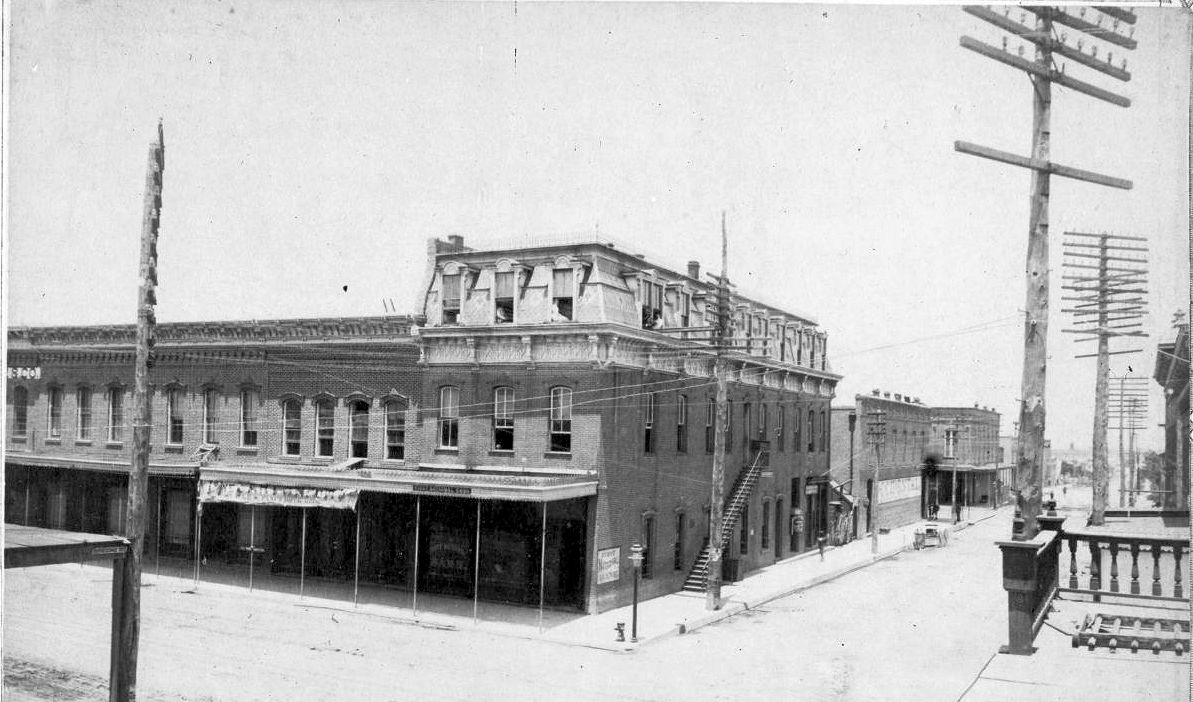 This photo of 1881 shows the bank building’s Mansard roof. The women sitting in the third-floor windows may have been “hello girls,” as operators were called. (Photo from University of Texas at Arlington Library.)
This photo of 1881 shows the bank building’s Mansard roof. The women sitting in the third-floor windows may have been “hello girls,” as operators were called. (Photo from University of Texas at Arlington Library.)
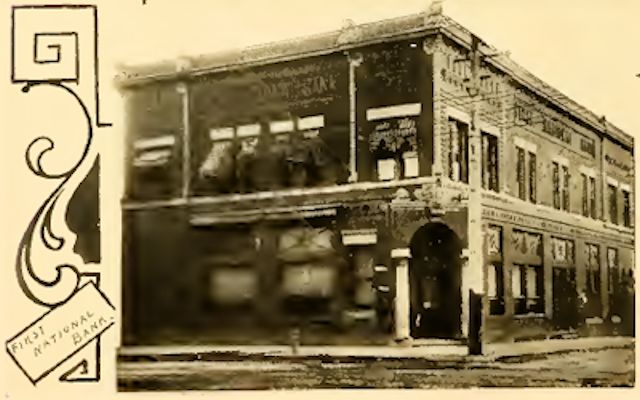 First National’s second home was built in 1901 on Houston Street at West 7th Street. (Image from Greater Fort Worth, 1907.)
First National’s second home was built in 1901 on Houston Street at West 7th Street. (Image from Greater Fort Worth, 1907.)
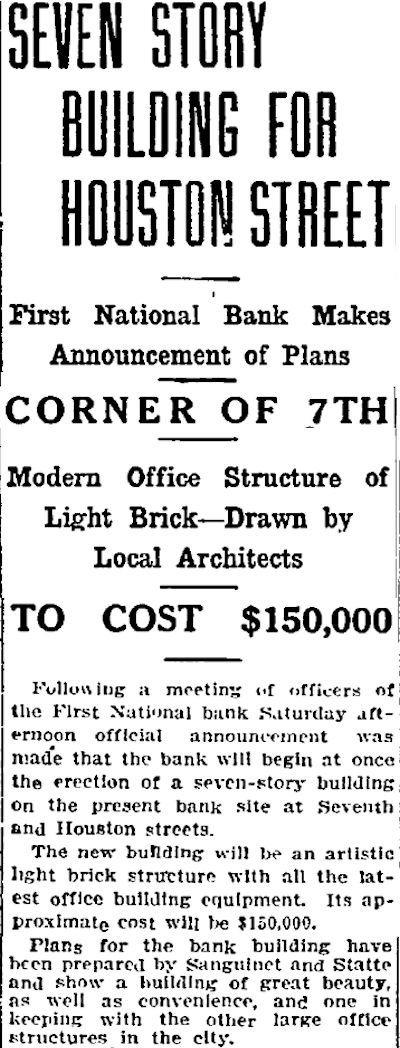 On November 15, 1908 the Telegram announced that First National Bank would build a third home on the site of the second. The new building would be a seven stories tall. Architects were Sanguinet and Staats.
On November 15, 1908 the Telegram announced that First National Bank would build a third home on the site of the second. The new building would be a seven stories tall. Architects were Sanguinet and Staats.
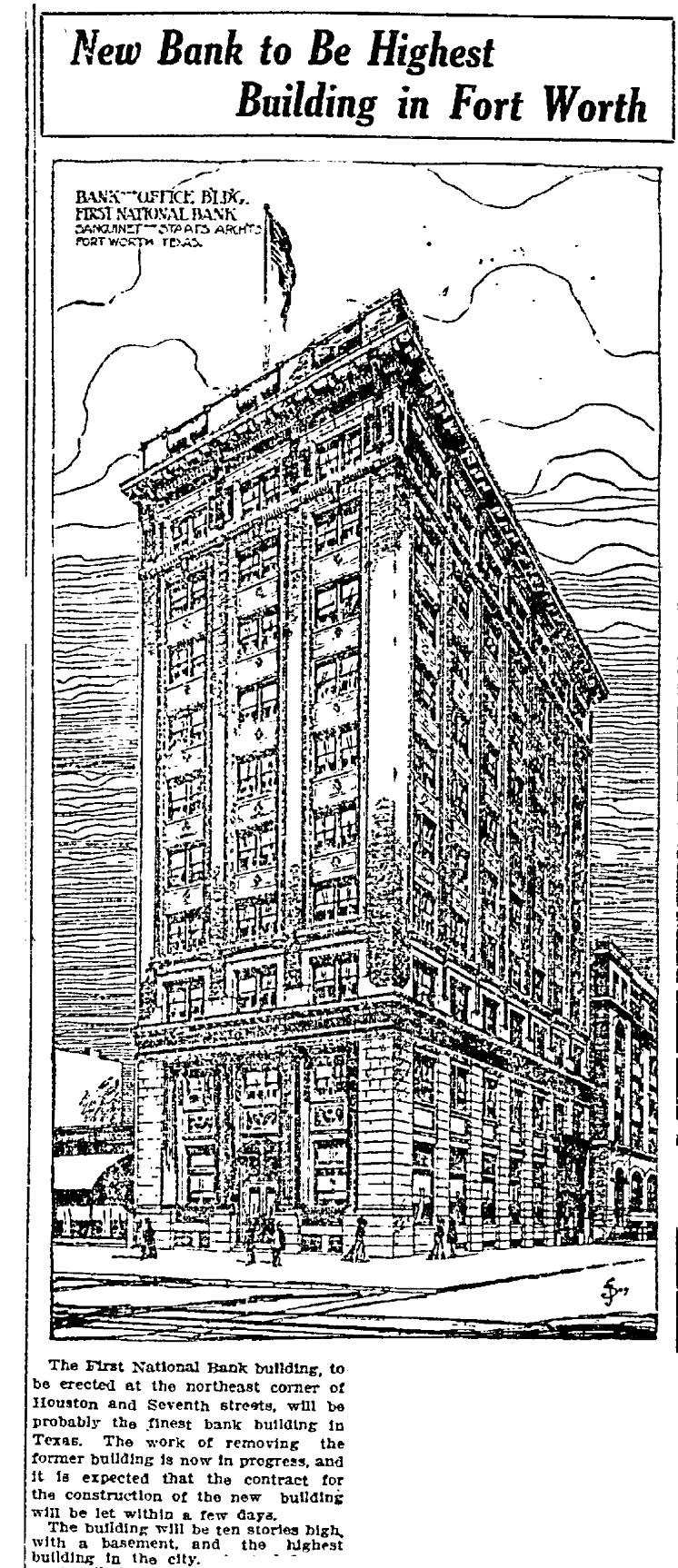 But on March 7, 1909 the Star-Telegram announced that the building would be a vertiginous ten stories—the tallest building in Fort Worth. A pure-dee skyscraper!
But on March 7, 1909 the Star-Telegram announced that the building would be a vertiginous ten stories—the tallest building in Fort Worth. A pure-dee skyscraper!
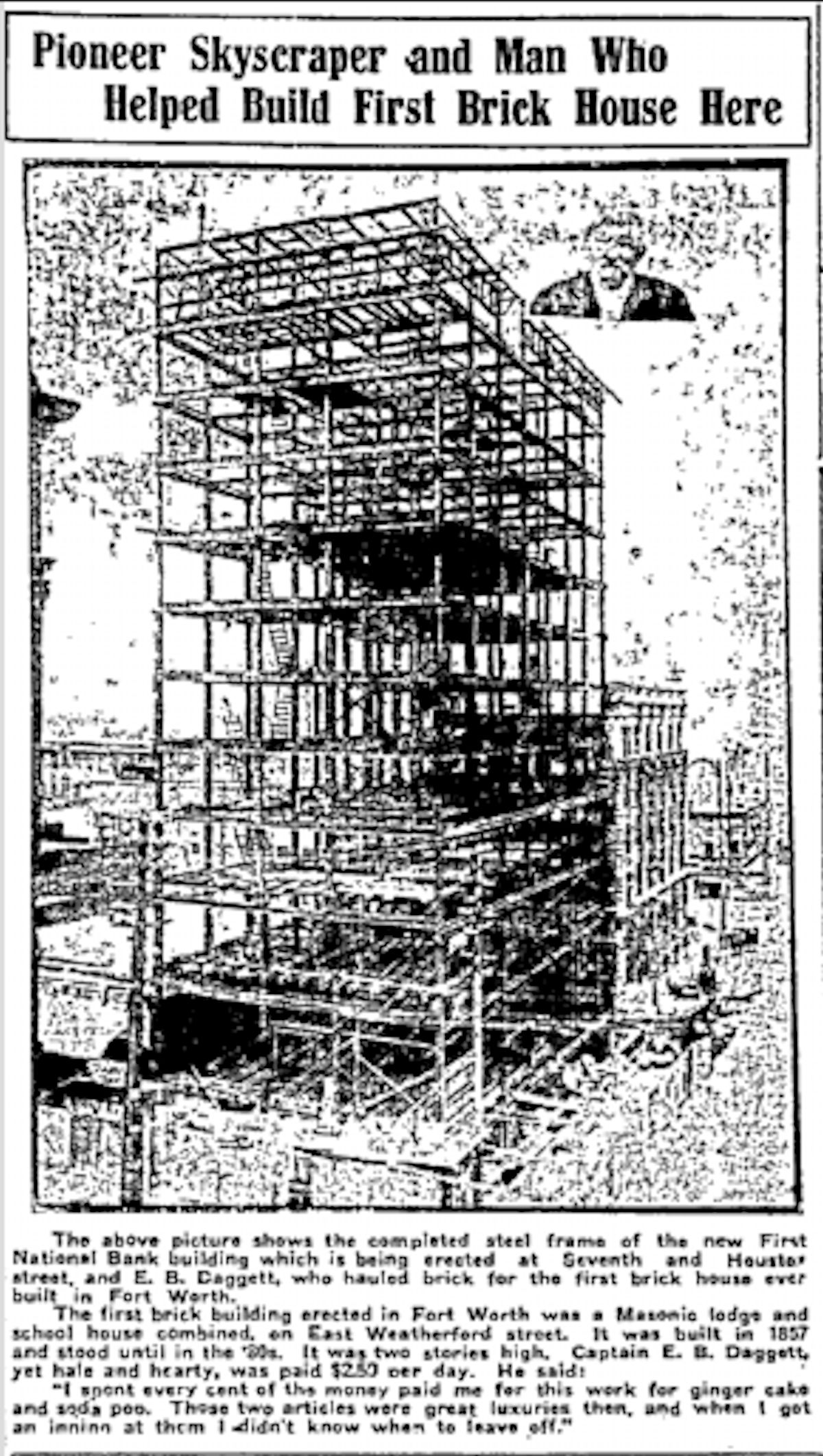 The steel frame allowed the new bank building to reach for the sky. The building went up quickly. The old bank building had not been torn down until late February. But on June 19 the Star-Telegram printed a photo of the completed steel frame. For contrast, floating beside the frame was a small photo of E. B. Daggett, son of early civic leader Ephraim Merrell Daggett and father of Jeff Daggett. The caption says that in 1857 E. B. Daggett at age nineteen helped build the first brick building in Fort Worth, for which work he was paid $2.50 a day and spent it all on “ginger cake and soda pop.”
The steel frame allowed the new bank building to reach for the sky. The building went up quickly. The old bank building had not been torn down until late February. But on June 19 the Star-Telegram printed a photo of the completed steel frame. For contrast, floating beside the frame was a small photo of E. B. Daggett, son of early civic leader Ephraim Merrell Daggett and father of Jeff Daggett. The caption says that in 1857 E. B. Daggett at age nineteen helped build the first brick building in Fort Worth, for which work he was paid $2.50 a day and spent it all on “ginger cake and soda pop.”
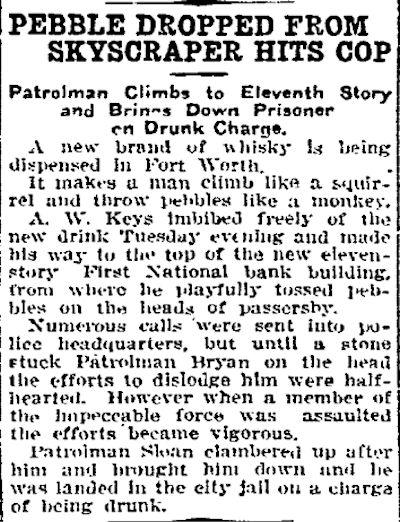 On September 29, 1909 the Star-Telegram reported that a drunk had climbed to the top of the “skyscraper” and dropped pebbles onto passersby below. Note that now the building is described as eleven stories tall.
On September 29, 1909 the Star-Telegram reported that a drunk had climbed to the top of the “skyscraper” and dropped pebbles onto passersby below. Note that now the building is described as eleven stories tall.
 On February 14, 1910 the Star-Telegram reported that a time capsule containing the names of bank employees had been placed in the masonry in the lobby of the new building. The capsule was to be opened and updated in fifty years.
On February 14, 1910 the Star-Telegram reported that a time capsule containing the names of bank employees had been placed in the masonry in the lobby of the new building. The capsule was to be opened and updated in fifty years.
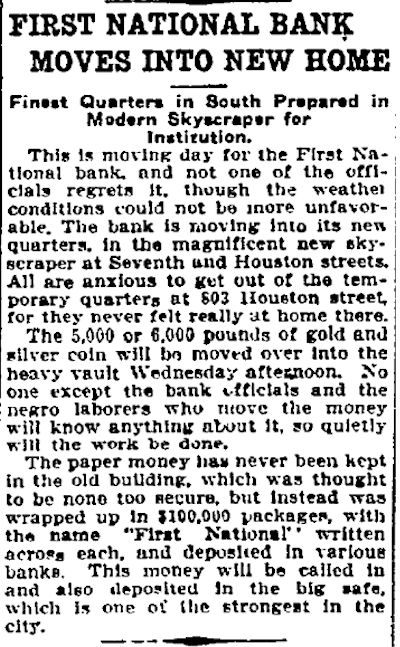 Two days later, on February 16, 1910 the employees of First National Bank moved into the “magnificent new skyscraper.” In a few days a few tons of gold and silver would be moved to the new vault.
Two days later, on February 16, 1910 the employees of First National Bank moved into the “magnificent new skyscraper.” In a few days a few tons of gold and silver would be moved to the new vault.
When bank founder Loyd died in 1912 his last words reportedly were about his bank’s new home: “Damn my soul, you’ll never fill that building.”
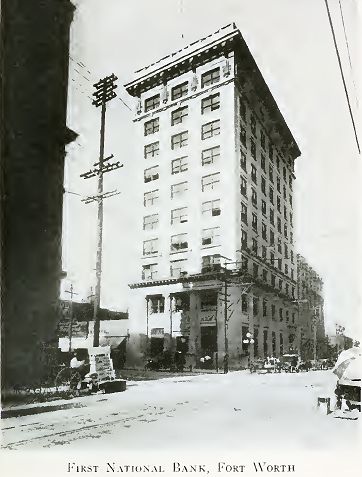
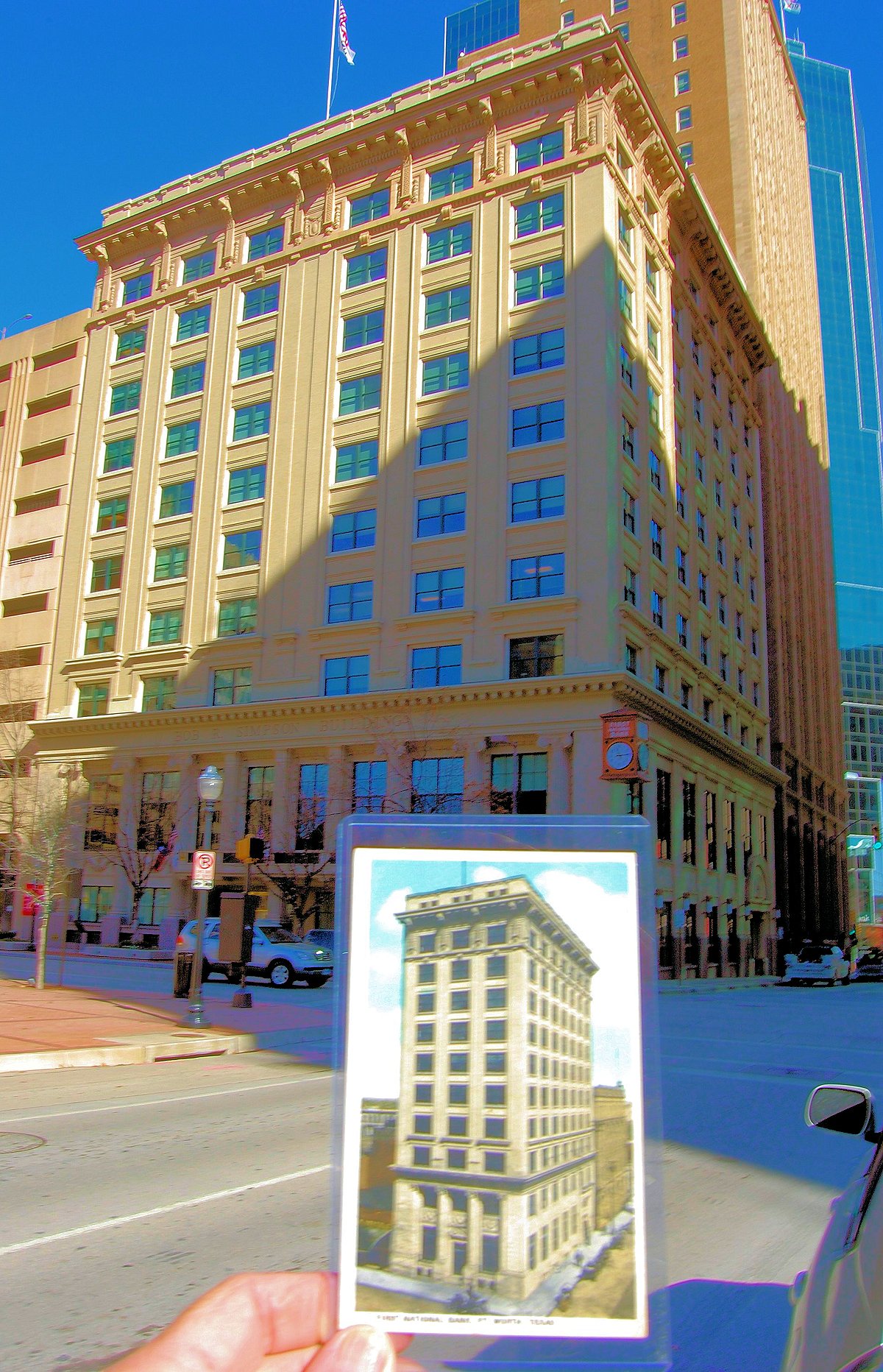 But Loyd’s bank would not only “fill that building” but also in 1926 would double its size. The 1910 building was only fifty feet wide along Houston Street—the width of three columns of windows. Architect Wyatt Hedrick, a protégé of Sanguinet and Staats, designed an expansion that widened the front facade by three identical columns of windows.
But Loyd’s bank would not only “fill that building” but also in 1926 would double its size. The 1910 building was only fifty feet wide along Houston Street—the width of three columns of windows. Architect Wyatt Hedrick, a protégé of Sanguinet and Staats, designed an expansion that widened the front facade by three identical columns of windows.

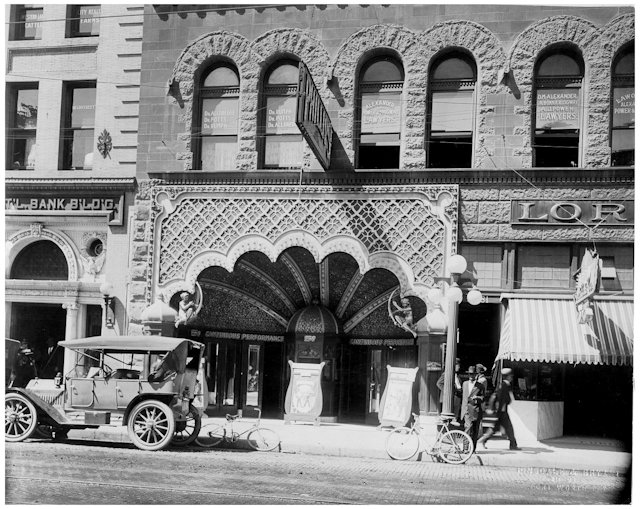 The 1926 addition was built on the site of Phillips’ Egypt Theater. (Photo from University of Texas at Arlington Library.)
The 1926 addition was built on the site of Phillips’ Egypt Theater. (Photo from University of Texas at Arlington Library.)
First National Bank moved to a new building at 500 West 7th Street in 1961. In 2003 XTO Energy bought the 1910/1926 building and restored it. The building was renamed the “Bob Simpson Building” in honor of the XTO cofounder.
Some views of First National Bank:
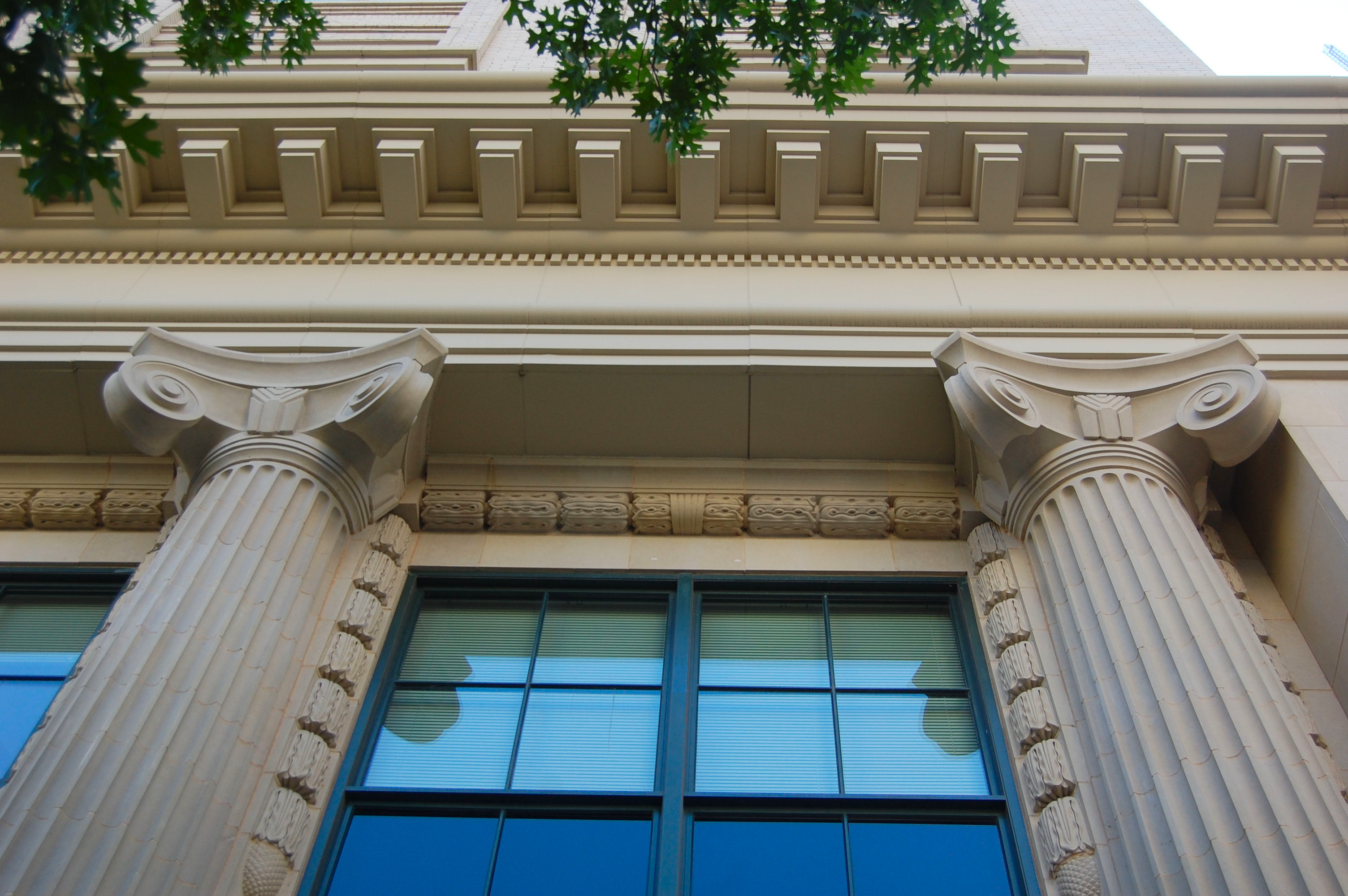

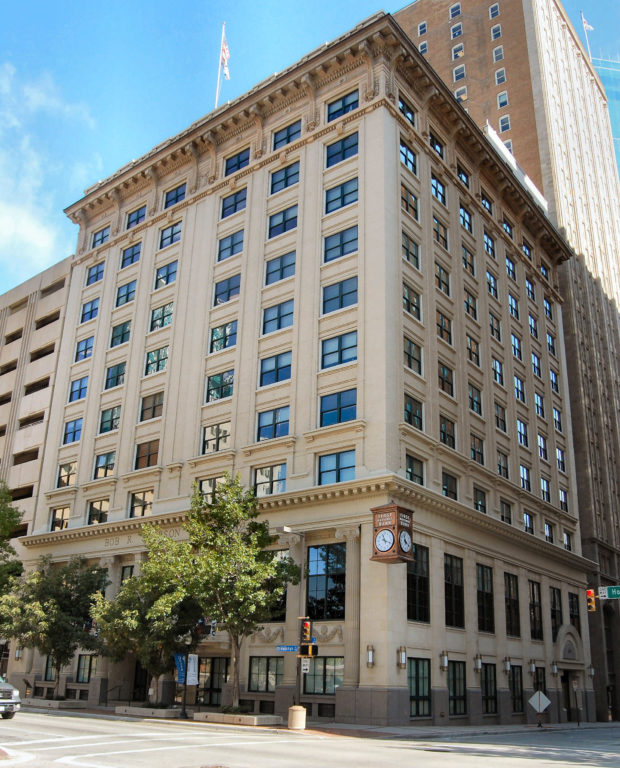
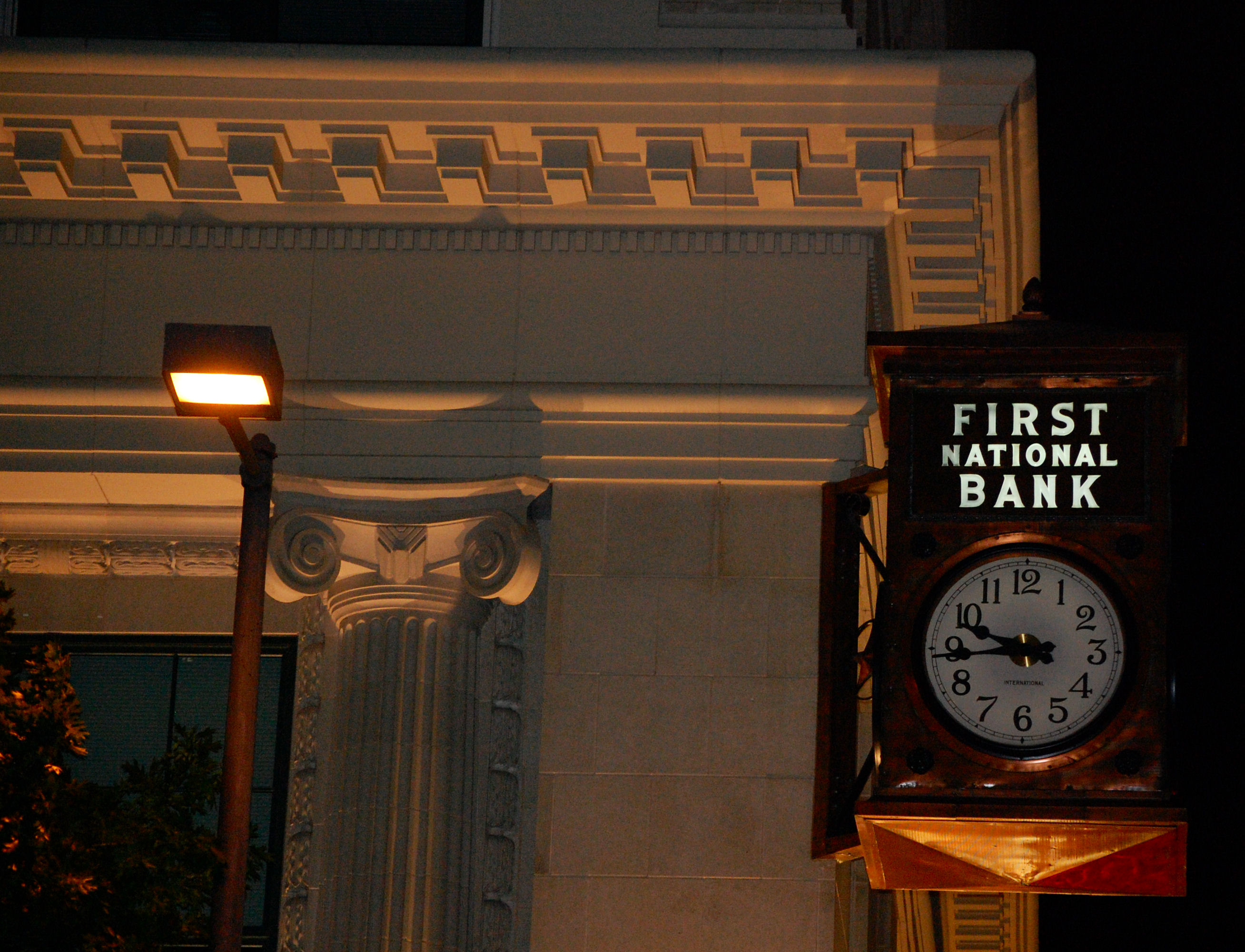



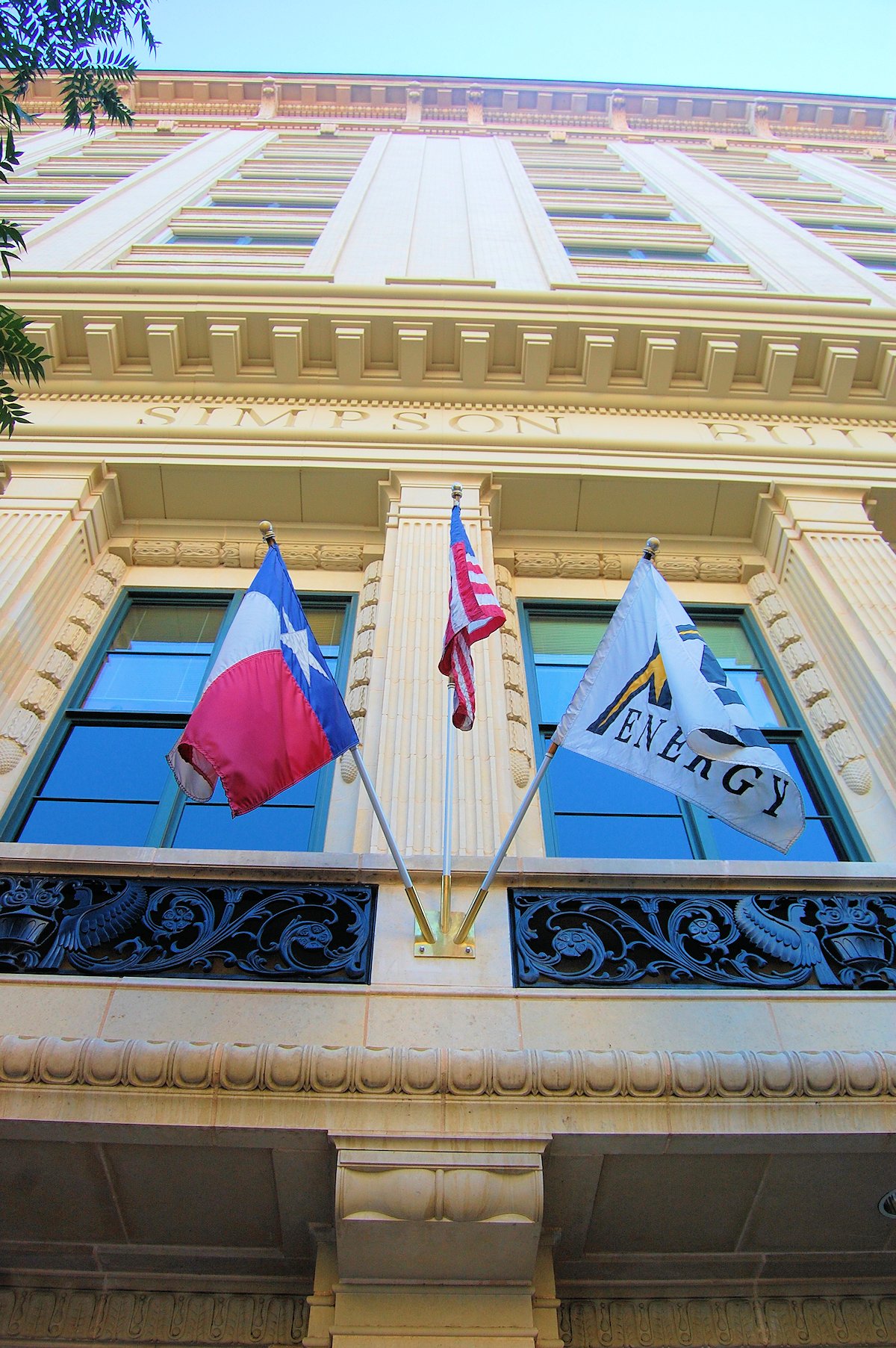
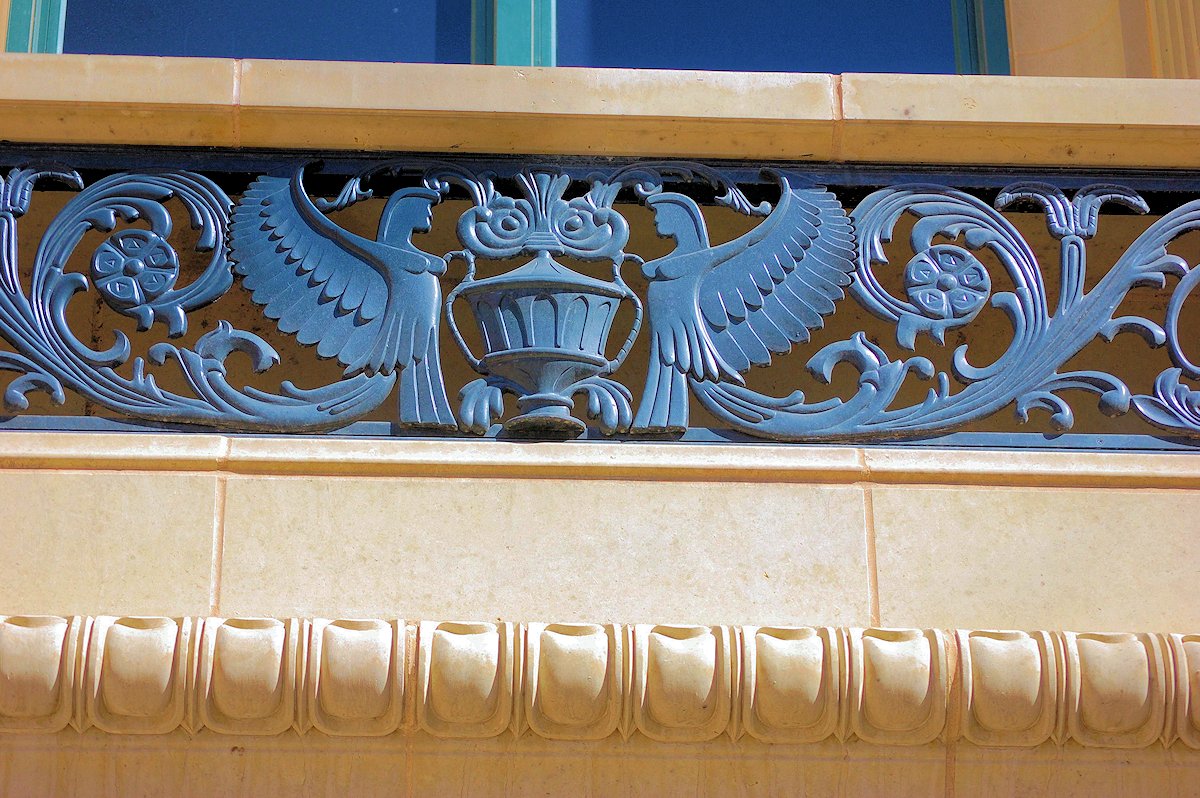
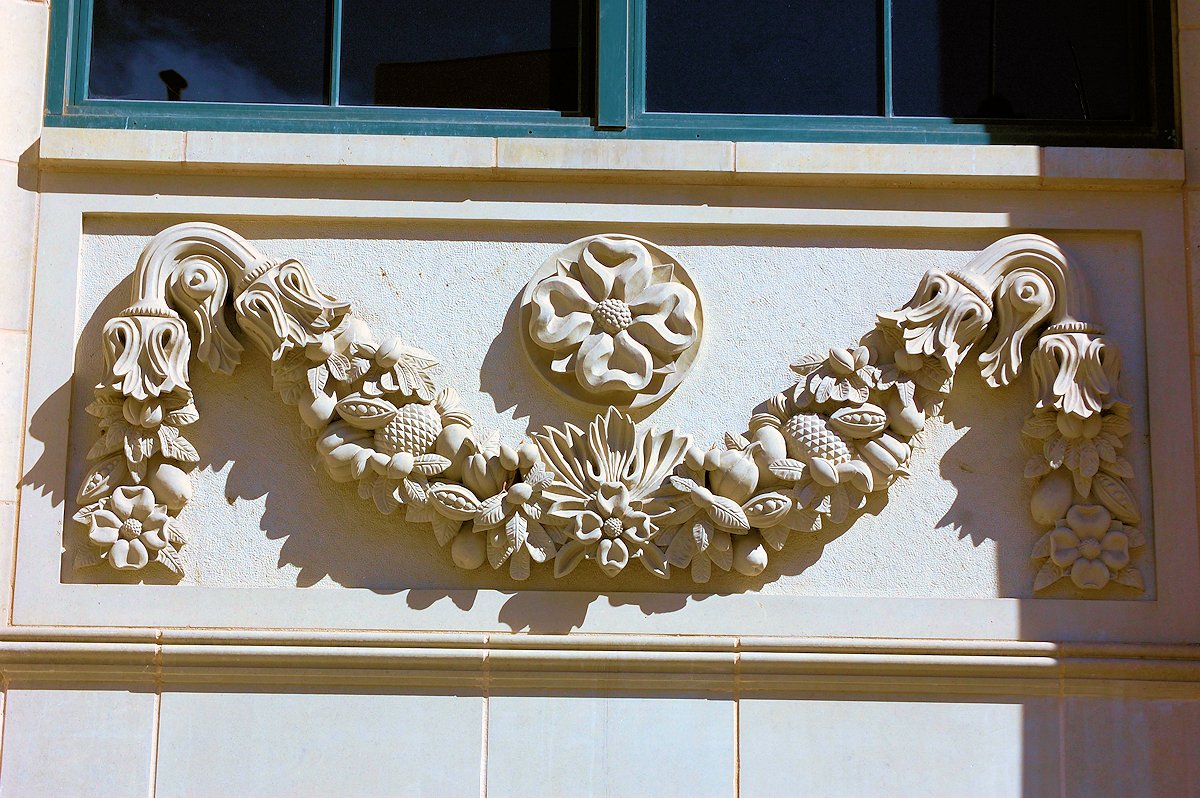
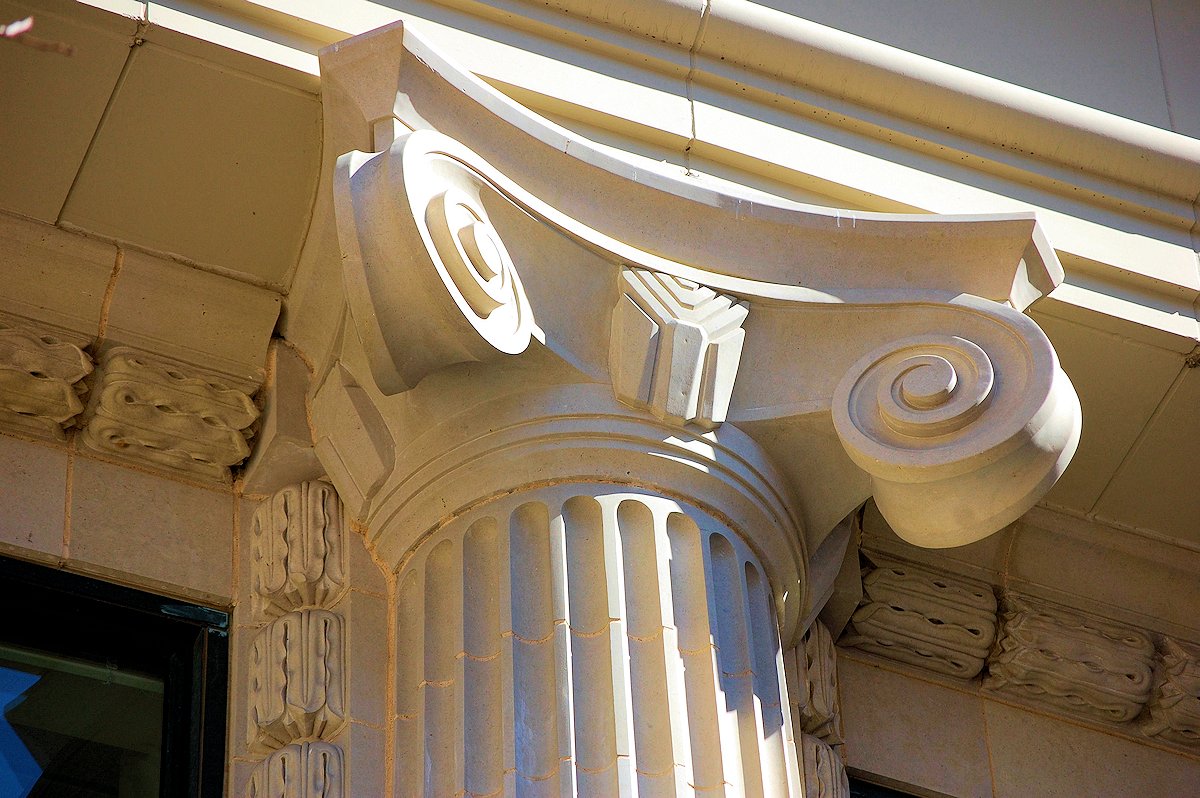

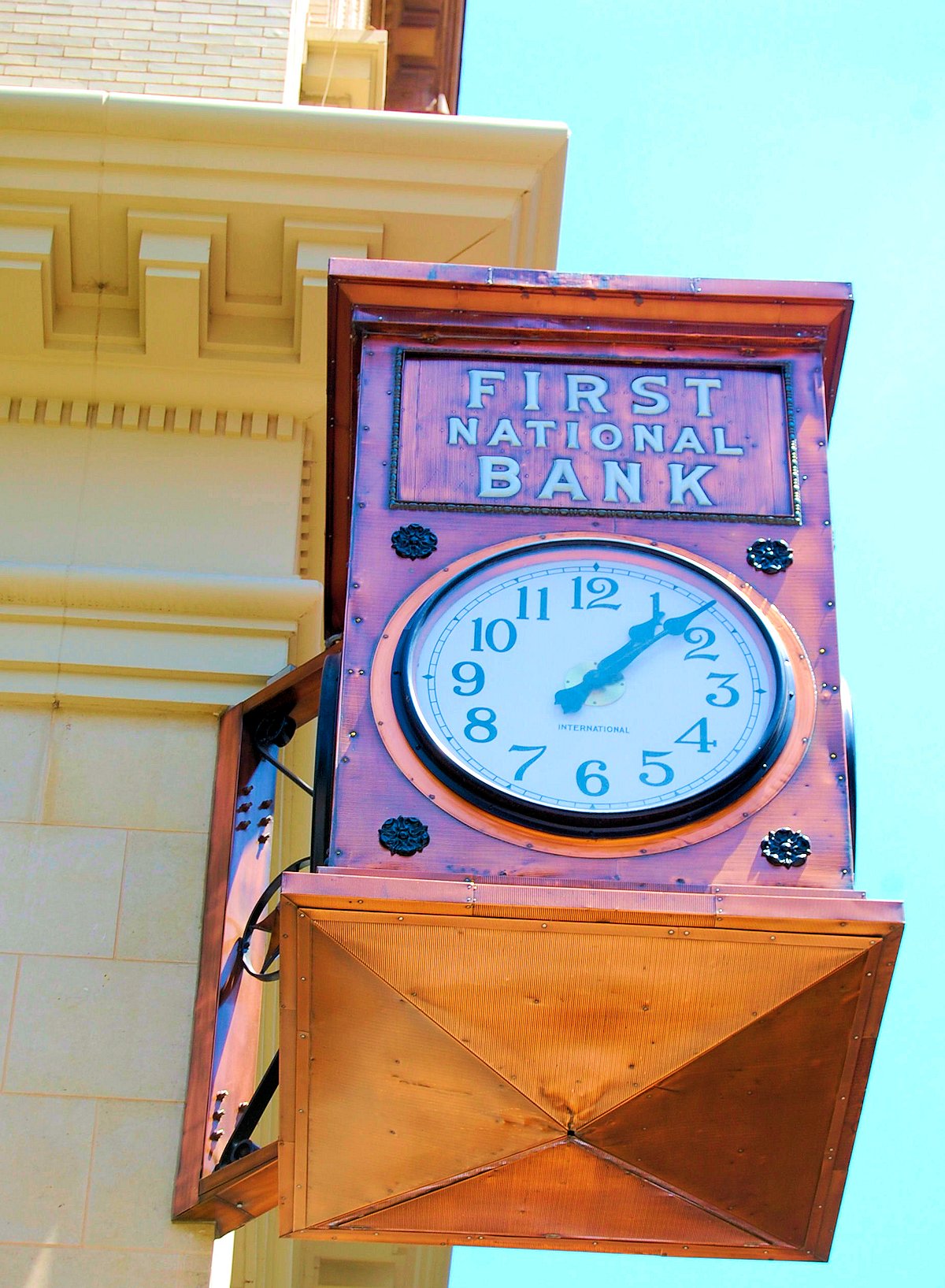






Great story and pics, Mike. But you got to love the banksters. Lots of money to build this kind of stuff. Made off the backs of the working oppressed.
Thanks, Earl. Grand building and restoration.
Bob?
Had the building been named for the bank’s founder instead of the building’s restorer, it might have been called the “Bottom.”
Again………such stunning detail! Thanks.
Thanks, Jo Ann. Yet another beautiful old building. I will showcase many more.